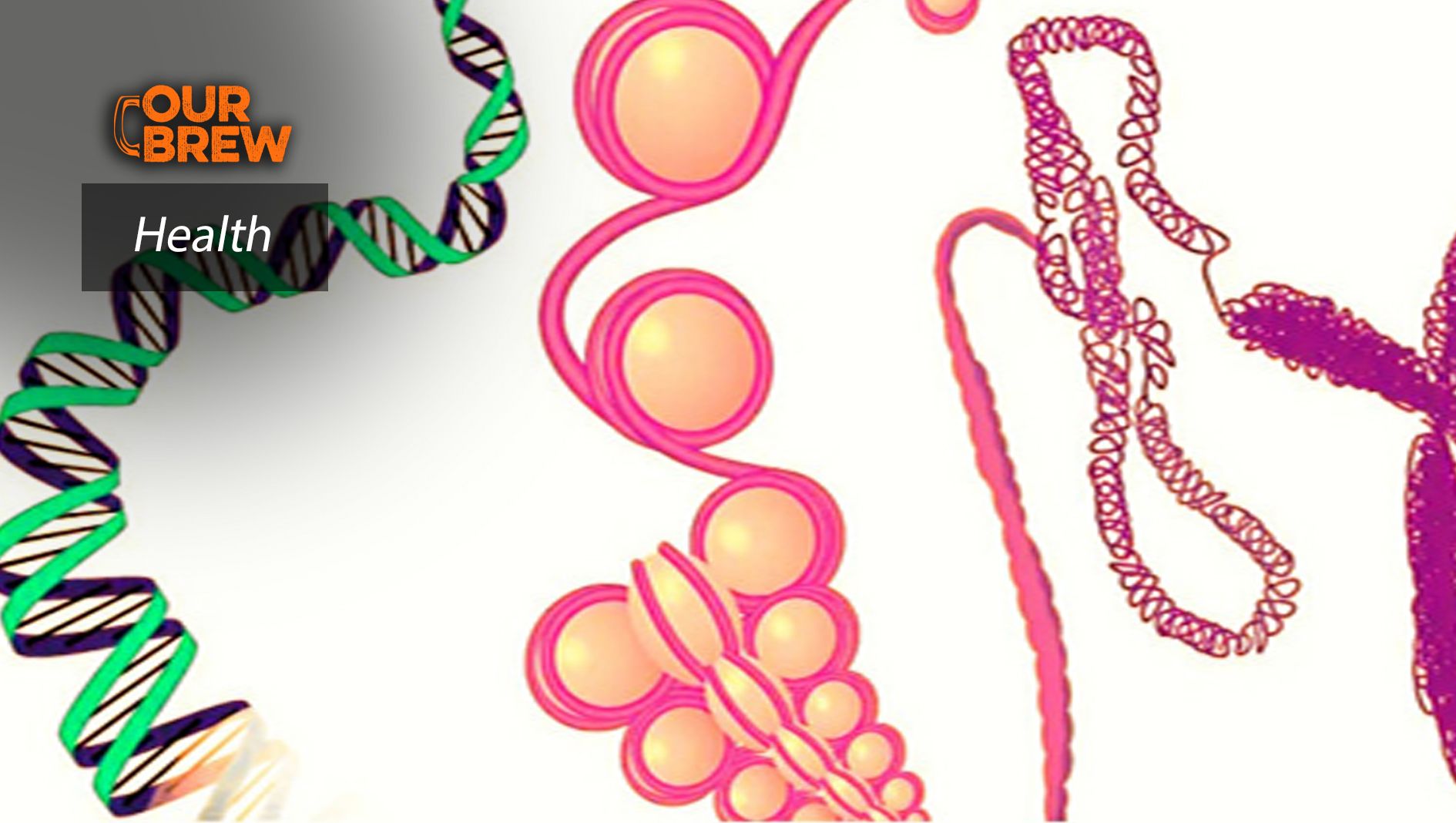
How “epigenetic reprogramming” could change the health equation, solving both cancer and aging; first results in mice are promising but the road is still long and ethical oversight is needed
by Richard Seifman and Claude Forthomme - Senior Editor
Last month, the news that could forever change our health equation broke out: A cancer-killing pill has finally arrived after 20 years of research. The new drug, using epigenetic reprogramming, has shown breakthrough potential in mice and dogs. The new cancer pill shows promise in treating solid cancers (some 70 cancers were tested in animals), selectively destroying cancer cells while leaving healthy cells unharmed.
The drug is now undergoing pre-clinical research in the US, with Phase I clinical trials already launched last year (in October 2022) at the City of Hope and they are now in Phase II (out of 3 phases of trials). Linda Malkas, Ph.D., professor in City of Hope’s Department of Molecular Diagnostics & Experimental Therapeutics describes the process like this:
“Imagine cancer as the water filling up a bathtub. Left unchecked, the tumors or water will eventually overflow and damage other parts of your home. The treatment my team at City of Hope created is akin to a watchful homeowner who shuts the water off — stopping the spread of tumors to other parts of the metaphorical house — and then drains the tub, eliminating the cancer.”
And her colleague Vincent Chung, M.D, who is principal investigator in the clinical trial, added:
“By targeting PCNA, we are inhibiting the complex machinery to stop cellular growth and proliferation. This is a new way of trying to kill cancer cells or at least to slow it down.”
Unsurprisingly many doctors, quick to douse hope, have rushed forward to say that “it’s too early to tell”. As Dr. Tim Larson, director of research at Minnesota Oncology noted: “ “A lot of things look good in the lab. We’ve cured a lot of mice with cancer. But some of these same cures – when it came time to test in humans – they didn’t result in the same success.”
Maybe so and caution is always in order, but this emerging technology known as “epigenetic reprogramming” is definitely looking like the way forward and it is turning up in other fields too, in particular to address aging and the string of age-related diseases, from hearing loss, cataracts and refractive errors, back and neck pain and osteoarthritis, chronic obstructive pulmonary disease, diabetes, depression and dementia.
The implication is clear: Death for us humans is likely to never be the same again.
Big money is backing research
Well, if you’re the American billionaire Robert Nelson who is famously death-phobic you might put your money – and your hopes and your efforts – into epigenetic reprogramming.
This relatively new advance is what Nelson believes is “the biggest thing in healthcare in 100 years.” In fact, Nelson insists, “We will clearly live much healthier lives if this works.” And longer ones too, he insists, if we invest in this kind of biological reprogramming.
In short, Nelson and his like-minded colleagues and scientists believe epigenetics could have a profound effect on our collective future simply by changing the way genes function.
But Nelson is not alone in betting on this kind of research. As reported by the Wall Street Journal (August 31), “Saudi Arabia is dangling billions for research on aging” and “scientists are lining up to take it”. Specifically, the Saudis plan to put “more than $1 billion a year into global efforts on longevity”.
What is getting everyone excited is this notion: by altering our behavior and environment we can cause valuable, durable changes, and this will work well and give hope to the aging – and to those affected by age-related diseases and of course, as mentioned above, cancer. In the case of aging, the challenge is to reverse it, bringing the affected cells back (or closer) to their initial condition; in the case of cancer, the challenge is to control the multiplication and proliferation of cells, again by the same process of bringing the cells back to their initial condition.
Moreover, unlike genetic alterations (always a chancy decision), “epigenetic “changes are reversible and do not change your DNA. However, they can change, proponents insist, how your body reads a DNA sequence.
The video below features Dr. David Sinclair, tenured Professor of Genetics at Harvard Medical School and considered a leading expert in the field of longevity. Dr. Sinclair is also the author of the New York bestseller book Lifespan: Why We Age & Why We Don’t Have To (published by Atria Books, 2019). In this book, he explains his bold new theory for why we age, arguing that “Aging is a disease, and that disease is treatable.”
Is this theory about aging a sure thing? There are certainly doubters here too, such as Dr. Richard A. Miller, professor of pathology at the University of Michigan who argues that it is simplistic and misguided to explain illness as the result of cells that are aging, which is one of the most important potential benefits seen by some for epigenetic reprogramming.
But this novel area of scientific endeavor might – just could – have a profound effect on our collective future. It focuses on genes and the study of how behavior and environment can cause changes in the way genes function. Because unlike changes in specific genes, what is key here is that “epigenetic alterations” are reversible.
A bit of the science: How epigenetics works
Without getting deep in the weeds, it is useful to have some sense of different types of epigenetic changes:
- DNA “methylation” and “demethylation” deal with specific places on the DNA; typically, methylation turns genes “off” and demethylation turns genes “on”;
- Histone modification is when DNA wraps around proteins (called histones). When histones are tightly packed, the gene is turned “off”. When loosely packed the gene is turned “on”. Chemical groups can be added or removed to make histones more or less tightly packed;
- Non-Coding RNA helps control gene expression by attaching to coding RNA, along with certain proteins, to break down the coding RNA so it cannot make proteins.
Pericentric gene changes occur as you age, both as part of normal development and aging and in response to your behavior and environment. Such changes begin even before birth. Epigenetics helps determine which function a cell will have, for example, whether it will become a heart cell, nerve cell, skin cell, and so forth.
Germs – infections- can change your epigenetics thereby weakening the immune system; it is precisely these mutations that make risk of various cancers more likely.
Bringing new science into the equation: Epigenetic reprogramming
Epigenetic “reprogramming”, or the process of resetting and modifying the epigenetic marks within cells holds great promise for regenerative medicine, disease treatment, and aging interventions.
However – and it is a big “however” — before it can become widely applicable and commercially viable, several vital challenges need to be addressed.
The main challenges:
Extensive research has begun but much more will be required to fully comprehend the precise mechanisms and interactions of the epigenetic marks in different cell types and contexts.
Reprogramming will need to be highly specific and accurate to achieve the desired changes without possibly devastating and unintended alterations. Inefficient or off-target modifications could lead to detrimental effects on cellular function or even promote disease.
Efficient and reliable methods for specific cells or tissues will be crucial. Currently, techniques such as viral vectors, nanoparticles, and direct protein delivery are being explored, and there are new tools such as CRISPR which dramatically improve prospects for results.
But there is much work to be done before any of these delivery methods are seen as efficient and safe, with the assurance of minimizing potential side effects.
Ethical implications will be central in going ahead with epigenetic programming. As new technologies emerge, federal laws will be needed, and regulatory agencies will have to be in place.
Most important: those agencies will need to apply policies and power to evaluate and approve this new form of programming in clinical settings. The federal agencies will also need to be ethical as well as scientific gatekeepers, laying out guardrails – as well as timelines for medical and commercial viability.
In fact, going forward both the public and private sectors will need to ensure that the manufacturing process will produce epigenetic modifiers in sufficient quantities to meet demand in developed countries and also offer availability on an equitable basis in less developed countries.
Clearly, this is a growing field of intensive research that is already attracting enormous investment. Private firms are actively working on ways to rejuvenate cells and hope they can restore functions characteristic of younger cells to the old cells. To date, however, the only current proof of such experimental hopes is apparent in mice.
There have been promising research results. For example, in Dr. David Sinclair’s lab at Harvard Medical School, the researchers have managed to turn old mice young again. In a first experiment in 2020, the old mice with poor eyesight and damaged retinas suddenly got to see again, and, in some cases, with vision as good as their offspring’s.
In another study (published in Nature Aging in 2022) scientists at the Salk Institute, in collaboration with Genentech, a member of the Roche group, have shown that they can safely and effectively reverse the aging process in middle-aged and elderly mice by partially resetting their cells to more youthful states.
If epigenetic reprogramming is to achieve its potential and move effectively to the next stage of wider application, it will require much more than the cash infusions from billionaires like Robert Nelson.
True progress in fighting a death that comes too soon – whether from cancer or the process of aging – will come only from interdisciplinary collaboration between researchers, clinicians, ethicists, and early-on active engagement of national and international public sector organizations.
The time to get a handle on this fast-emerging field is now.
First published in Impakter. You can read the article here.
About the Author
Richard Seifman
Richard Seifman is a UNA/NCA Board Member, former World Bank Senior Health Advisor and U.S. Senior Foreign Service Officer, and Honorary Diplomate of the American Veterinary Epidemiology Society (AVES). He is a Senior Columnist at Impakter.
If you liked what you just read and want more of Our Brew, subscribe to get notified. Just enter your email below.


Related Posts
6 Tips for Staying Safe in Extreme Heat if You’re a Runner, Cyclist or Anyone Else Active Outdoors
Jun 26, 2025
How Stress Shapes Cancer’s Course
Jun 02, 2025
Probiotics Slow Down Alzheimer’s Disease in Mice
Mar 02, 2025